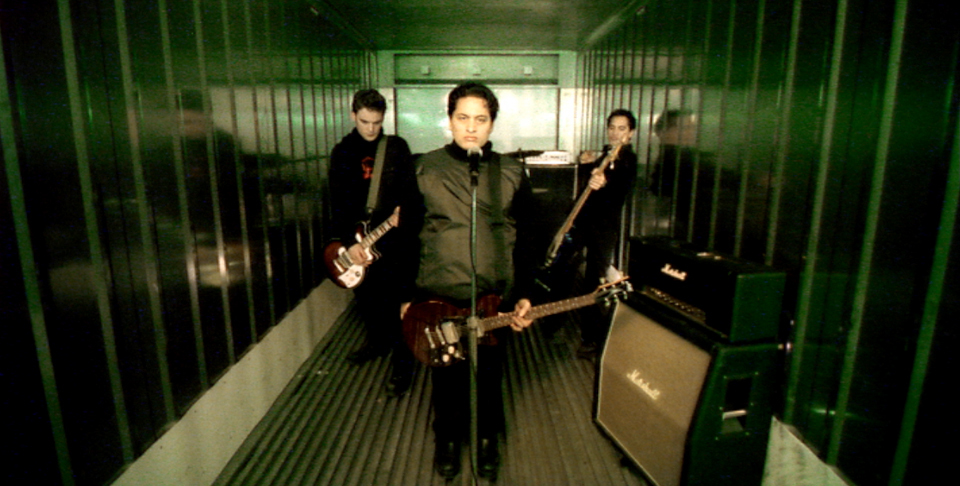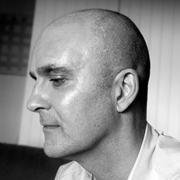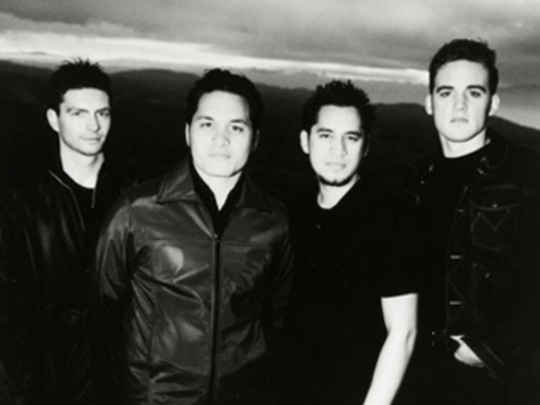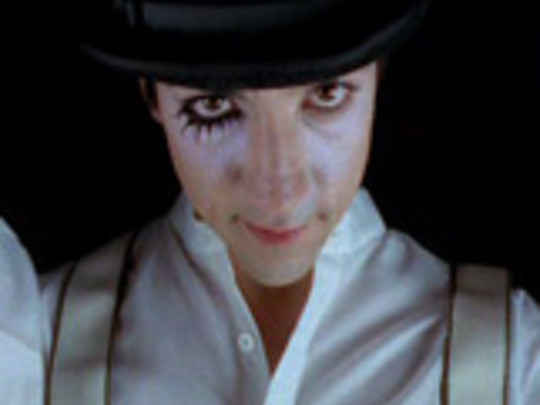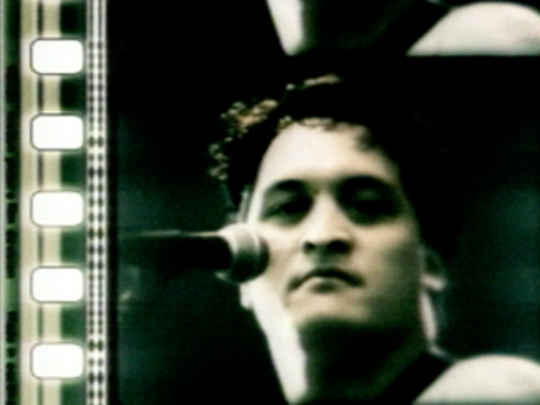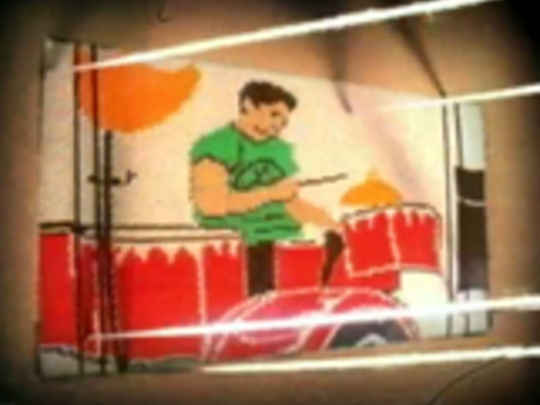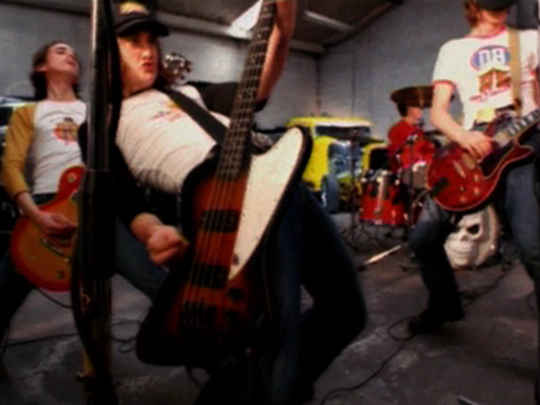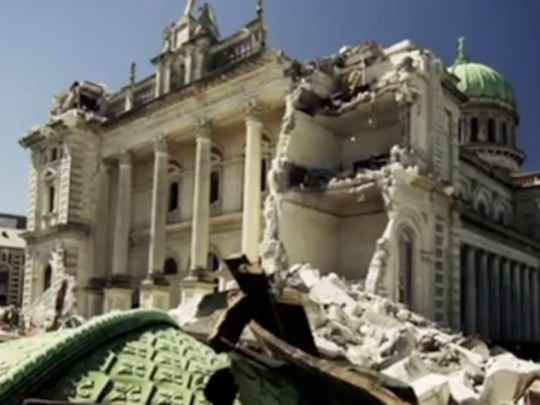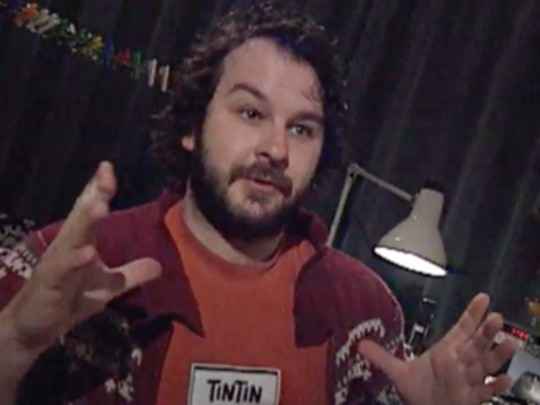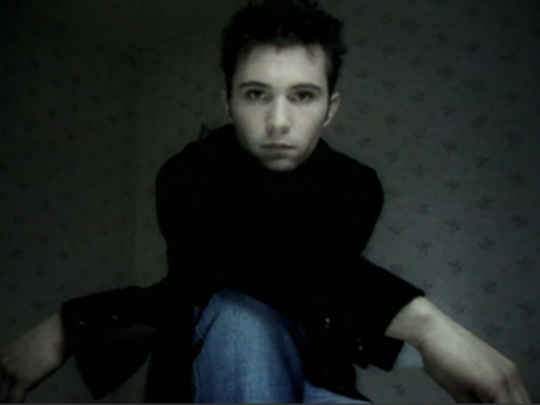Returning the Call
In late 2020 I was contacted by Imogen Porter from NZ On Screen. She was enquiring about the video clip for the song 'Calling On', which I directed for the band Weta back in 2000. The video has always been a favourite of mine, as I thought we’d managed to capture the spirit of the track visually through a combination of robust performance and painterly graphics. So I was delighted to hear of her interest.
For the record, the clip was produced in July 2000 by Simon Burton, at Ripple Digital Films in Melbourne. At the time, Weta had been signed to Warner Music in Australia; they'd been living and working in Melbourne since 1999. Originally shot on Super 16mm film over two days by cinematographer Peter Falk, the footage was transferred to digital betacam via telecine.
Visually the clip was heavily influenced by some of my favourite painters of the day. The references to Australian artist Jeffrey Smart (known for his paintings featuring shipping containers) are pretty obvious — but perhaps less so the influence of Peter Booth, whose dark, symbolic landscapes and brooding, isolated figures were particularly inspiring in the creation of the video's more surreal scenes.
At the time, filmmakers had started playing heavily with slow motion during band performances, where you would overcrank [record images at a faster rate] the camera whilst having the band perform to a sped up version of the music. I decided to go the other way, undercranking and slowing down the song. This created the jerky, staccato effect during the band’s fantastic performance in the shipping container. It couldn’t have been easy for them to perform to a slower version of the song, but they aced it on the day.
Being early adopters of computer graphics and working with limited computing grunt, we were somewhat hamstrung back in 2000. I’ve always wanted to clean up some of the compositing in the clip; the chance to revisit the work was too good to pass up in the days of Covid downtime.
Fortunately I have kept all of my camera originals on digital betacam, so there were no issues with accessing the footage. I’d also kept all of the CDs on which the visual effects artist Mike Gordon had delivered his project files and final renders. There were six CDs all up, totalling around 4.2 gigabytes of data. Big numbers back in the day! Mike was living on the other side of the city at the time. During post-production we’d anxiously wait for couriers to make the latest CD delivery, so we could load up the next amazing effects shot. There was no transferring over the web back then; you’d be waiting for weeks for files to download!
Because of time constraints, Mike would often have to render shots with some compromises. A lot of the original CG files contained aliasing (distortions which create a buzzing effect on the footage) and were a tad soft, so I asked if he’d be interested in rerendering the shots for the redux. He was keen to be involved, so we set about the task of unarchiving the After Effects project files from 2000, only to find that the current day version of After Effects would not open them. Hmmm…Fortunately I'd kept my old G5 Apple Mac in storage; I dug it out, booted it up and what do you know, we could read and upgrade the files. But that was only half the battle. Mike had to find a version of Lightwave that would open his 3D project files from 20 years ago. I’ll let him explain…
"In 2000, I’d bought myself a couple of very hefty (for the time) rendering machines for around $10,000 Australian. These machines had a tiny fraction of the processing power of our phones today, and to multi-thread you needed two CPUs on the motherboard. To get this stuff through, I had to limit renders to a maximum of about five to 10 minutes per frame. Everything had to be super-optimised, as RAM was so expensive at the time. So the pipeline was Photoshop, LightWave (version 6.5), then After Effects (version 6) (for compositing). No global illumination (that’s used in everything computer-generated today, to replicate real world lighting), just lots of simple lights to fake indirect bounced light.
Unfortunately, the most recent version of LightWave, almost two decades and several complete rewrites later, just couldn’t open the files. Luckily, I was able to redownload version 10, still in my LightWave account, and crank up the settings hugely for much smoother images. Phew! We could do it. For a while it looked like all the carefully archived project files I'd kept were useless".
Finally I’d like to say a few words about Weta vocalist Aaron Tokona. We worked together briefly on the clip, and met on one other occasion, when he invited me to a Weta concert in Melbourne. So I didn’t know him well, but I thought about him occasionally over the intervening years. During post-production of the clip he visited Ripple Digital Films, where we were working. He was more than intrigued by the challenges of the post-production process and I remember him comparing it to the mixing and mastering stage of audio production. I was listening to Underworld album Beaucoup Fish whilst compositing, and he commented whilst watching on that it was a current favourite of his. He struck me as a friendly and humble guy with a glint in his eye, who was serious about his art. I was very sorry to hear of his death.
Having said all of that, it’s been a delight to revisit the clip. 'Calling On' is a magisterial track that sounds as good today as it did then. I’m happy that we were able to contribute to Weta’s legacy in some small way.
Forever calling on.
- Melbourne-born and based, Bart Borghesi has directed 120+ music videos, including clips for You Am I, Something for Kate, and Airbourne. He has also directed documentaries, commercials, and short films.
